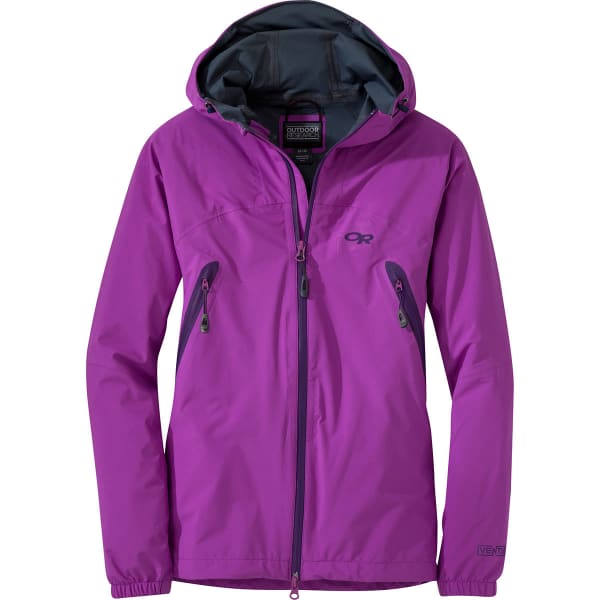


“We had the opportunity to lose the bulk of a mid-layer fleece or wool by using this new super quick drying and breathable puff insulation,” says Wall.

As they worked with different constructions and fabrics, something became apparent. “Often, however, ideas for solving these problems come from researching new fabrics.” In the case of the Deviator, they set out to experiment with Polartec® Alpha®, a premier active insulation. “It always culminates in trying to meet a functional need for our customers,” says Wall. While the honor is substantial, the designers at Outdoor Research always return their attention to what matters most: the customer’s needs. The imagination, innovation and effort paid off when the Deviator won the Backpacker Magazine Editors’ Choice Award. While hybridized jackets have been in the Outdoor Research line for over a decade, “The Deviator reflects one of our most concerted efforts to put the right fabric in the right places for our athletes, regardless of previous convention,” says Jason Duncan, Technical Apparel Product Manager at Outdoor Research. This design philosophy obtains optimal performance by placing unique, technical fabrics in areas where their performance is best appreciated. Though the Deviator is lightweight, it is anything but simple. It’s a constant balancing act, and a challenge all too familiar for the designers at Outdoor Research. “The challenge of keeping certain areas of our body warmer and but avoiding excess perspiration and heat from too much warmth is a never ending one,” says Jeannie Wall, an Outdoor Research Product and Marketing Consultant for Alpine and Rock Climbing with decades of experience competing and playing in the mountains. Fortunately for us all, the design team at Outdoor Research got it right with the Men's Deviator Hoody and Women's Deviator Hoody, a lightweight, breathable active Insulation piece that was named a Backpacker Magazine Editors’ Choice for Spring 2015. Perfecting the balance between warmth and moisture management isn’t easy, and getting it wrong can turn your stellar day in the mountains into an epic. And like our products, our lives and the lives of our customers are sculpted by the experiences we have in the natural, unpredictable environments we love. At Outdoor Research, our products have been designed by adventure for more than 30 years, with features and fabrics imagined, tested and perfected in the wild. I am asking sincerely, because I plan to buy either the Proton LT or the Ascendant hoody soon, and I want to make sure I correctly understand the pros and cons of each.“Designed By Adventure.” It’s more than just an advertising slogan. Do you have experience with Alpha not being durable? I’ve not noticed my fleece layers losing loft. First, how do you think the OR Ascendant hooded jacket would compare in this review?Īnd, you state that PolarTec Alpha insulation is not durable? Can you please explain why? I thought that since Alpha is basically long-pile fleece, it would not break or lose loft like short-fiber, loose synthetic insulation fills having very small fiber diameters. So Max, I have two questions if you would be kind enough to reply. And according to Max’s review, the Uberlayer is the same warmth as the Proton LT and Nano Air. The Ascendant uses the same weight of PolarTec Alpha insulation as the reviewed Uberlayer, so I assume they would both be the same warmth. The OR Ascendant hoody weighs a claimed 13.0 oz, which is a whole 1.4 oz lighter than the top-recommended Arcteryx Proton LT.


 0 kommentar(er)
0 kommentar(er)
